By Peter J. Koehler
In an era of increasing mean age of the general population and the resulting burden of degenerative disease—with respect to neurology, in particular dementia and Parkinson’s disease—studies on aging may provide interesting insights. Genomic stability in cancer and aging are popular areas of study today. Preventive lifestyle campaigns with respect to cardiovascular diseases resulted in favorable effects, at least for a part of the community. One might wonder whether our predecessors were engaged with this subject.
Resignation
Despite the much lesser mean age in the past, partly due to child mortality and lack of urban hygiene, a few persons became quite old then as well. Therefore, it is of no surprise to find texts and studies on aging centuries ago. One of the early authors on the subject was the Roman statesman and philosopher Marcus Tullius Cicero (106 BCE-43 BCE), who wrote an essay on the subject (Cato Maior de Senectute) in the year 44 BCE, when he was 63 years old. It is considered literature of consolation for elderly people. Cicero has Cato the elder (234-149 BCE) say:
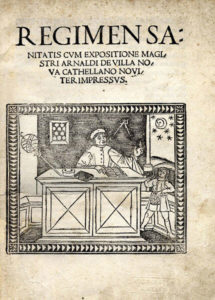
Figure 1. Arnaldus de Villa Nova’s (c. 1240-1311) 1480 printed edition of the Regimen Sanitatis.
“He does not do what young men do; nevertheless he does what is much more important and better … to each part of our life there is something specially seasonable; so that the feebleness of children, as well as the high spirit of youth, the soberness of maturer years, and the ripe wisdom of old age—all have a certain natural advantage which should be secured in its proper season … I frequently attend the Senate and bring motions before it on my own responsibility, prepared after deep and long reflection. And these I support by my intellectual, not my bodily forces.”
But he also wrote about old age, “We must fight it as we should an illness” and “Senectus ipsa morbus est” [old age itself is a disease].
Early Lifestyle Advice
The medieval Regimen Sanitatus (of Salerno, Italy, where an early medical school was founded in the ninth century) of which 240 printed editions have been published (first in the late 12th century) in Latin, Hebrew, Persian, and European languages, contained a number of regimens, including exercise, hygiene, diet, and moderation in everything. In fact, it was a didactic poem in hexameter verse. (See Figure 1.)
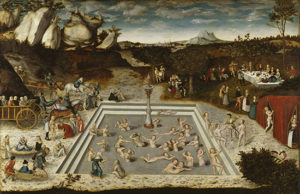
Figure 2. Fountain of Youth (1546), Lucas Cranach the Elder (public domain).
The idea of eternal youth, often depicted by the Fountain of Youth, originating from Hindu tradition, was often seen in the western world during the Middle Ages and already described by the Greek historian Herodotus (c 484-c 425 BCE). A 16th century painting by Lucas Cranach the Elder (1472-1553) provides a nice example of the legendary spring. (See Figure 2.)
In terms of humoral medicine, a (patho)physiological doctrine that reigned from Ancient Greek medicine up to around 1800, health and disease were considered to be the result of balanced or unbalanced mixtures of four body fluids: blood, phlegm, yellow, and black bile. Old age was associated with dryness and cold; in particular, it was caused by loss of warmth. Therefore, warmth of younger people, living or sleeping with them, could restore warmth. Alchemists tried to find the “elixir vitae” or elixir of life that would provide eternal life. (See Figure 3.)
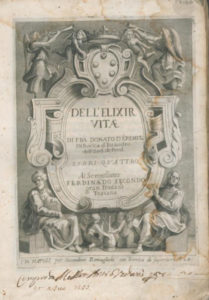
Figure 3. (right) Elixir Vitae by Fra Donato d’Eremita.
The English Franciscan friar and philosopher Roger Bacon (1214-1294) wrote a book The Cure of Old Age and Preservation of Youth that was translated into English and published in 1683. In the subtitle, we find “shewing how to cure and keep off the accidents of old age; and how to preserve the youth, strength, and beauty of body, and the senses of all the faculties of both body and mind.” (See Figure 4.)
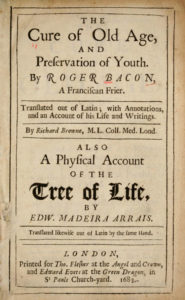
Figure 4. Roger Bacon’s Cure of Old Age (posthumous English translation of 1683).
The Venetian nobleman and patron of arts Luigi Cornaro (1464-1566) wrote his Discorsi della Vita Sobria (Discourses on the Temperate Life; 1591) probably at age 83. Fifty editions appeared up to the 18th and 19th century. Moderation in life, he believed, would lead to conservation of vital energy. Ages up to 100 or 120 could be reached in that way.
French philosopher René Descartes (1596-1650) wrote on old age as well. He searched for ways to avoid old age by prevention and cure based upon scientific knowledge (Discours de la Méthode, 6th part, 1637).
“And this is a result to be desired, not only in order to the invention of an infinity of arts, by which we might be enabled to enjoy without any trouble the fruits of the earth, and all its comforts, but also and especially for the preservation of health, which is without doubt, of all the blessings of this life, the first and fundamental one; for the mind is so intimately dependent upon the condition and relation of the organs of the body, that if any means can ever be found to render men wiser and more ingenious than hitherto, I believe that it is in medicine they must be sought for. It is true that the science of medicine, as it now exists, contains few things whose utility is very remarkable: but without any wish to depreciate it, I am confident that there is no one, even among those whose profession it is, who does not admit that all at present known in it is almost nothing in comparison of what remains to be discovered; and that we could free ourselves from an infinity of maladies of body as well as of mind, and perhaps also even from the debility of age, if we had sufficiently ample knowledge of their causes, and of all the remedies provided for us by nature.”
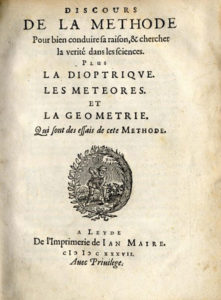
Figure 5. Descartes’ Discours de la Méthode (1637).
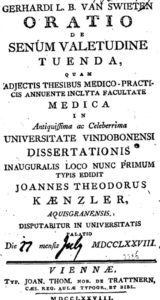
Figure 6. Title page of Gerard van Swieten’s Oratio (1763, published posthumously in 1778).
About a century later, Dutch physician Gerard van Swieten (1700-1772), who became the personal physician of Austrian Empress Maria Theresa and reformer of academic medical teaching in Vienna, held a foundation day speech, “Oratio de senum valetudine tuenda” [Address on protecting the health of the elderly] (1763), in which he presented a positive view of old age. He believed serious conditions in old age could be prevented by keeping the right balance of bodily fluids (blood, phlegm, yellow bile, and black bile) by temperance all one’s life. He advised against quacks and their elixirs. He used a nice metaphor: “The old experienced steersman quietly keeps course from the afterdeck, while the young climb the rigging on his command to adjust the sails.”
His German colleague Christian Wilhelm Hufeland (1762-1836), professor of pathology and therapeutics in Jena and Berlin, published his Kunst das menschliche Leben zu verlängern [Art to extend human life; 1797]. The book was translated into several languages. He took a special interest in the preservation of vital energy. Being a friend of the German writer and poet Wolfgang von Goethe (1749-1832), he added one of his aphorisms (from his play Egmont (1788), to which Ludwig van Beethoven composed music in 1810) on the title page. “Süsses Leben! Schöne freundliche Gewohnheit des Daseins und Wirkens!—von dir soll ich scheiden!“ [Sweet life! Sweet, pleasant habitude of existence and of activity! from thee must I part!]
In 1879, the English antiquary and writer William John Thoms (1803-1885) wrote The Longevity of Man. Its Facts and Its Fictions. With a prefatory letter to Prof. Owen, C.B., F.R.S. on the limits and frequency of exceptional cases. He investigated claims of “ultra-centenarianism,” advised a critical attitude with this respect, and concluded that most cases were not proven.
Charcot on Diseases of Old Age
French pioneer in neurology Jean-Martin Charcot (1825-1893) had an interest in diseases of old people, particularly in his early career, which is understandable when looking at the population of the Salpêtrière hospice at the time. His pupil Benjamin Ball (1833-1893; became psychiatrist at St. Anne, Paris) collected Charcot’s lectures on the subject and published them in 1868, Leçons sur les Maladies des Vieillards et les Maladies chroniques [Lectures on diseases of the elderly and chronic diseases].
Charcot provided the general phenomena of senile pathology, gave information on fever in these patients, and discussed gout and chronic articular rheumatism. The first of the 18 lectures is from Charcot’s early days at the Salpêtrière (1862). He explained what type of patients were living at the Salpêtrière, next to the insane and epileptic patients, a category he did not have to take care for. As for the rest “la population de cet asile se compose d’environ 2,500 femmes qui, pour la plupart, appartiennent aux classes les moins favorisées de la société, mais dont quelques-unes cependant ont connu des jours meilleurs » [the population of the asylum consists of approximately 2,500 women, who, for the main part, belong to the category of less favored by the society, but of whom nevertheless some have known better days].
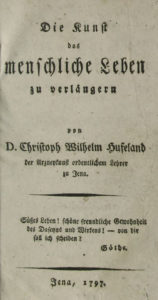
Figure 7. Title page of Hufeland’s Die Kunst das menschliche Leben zu verlängern (1797).
He distinguished two categories, the first consisting of women older than the age of 70, usually in good health, but who were living in misery and abandon. “C’est ici, messieurs, que nous trouverons les matériaux qui nous serviront à faire l’histoire clinique des affections de l’âge sénile”. [It is here, gentlemen, where we will find the material serving us to make a clinical history of affections of the senile age].
The second category consisted of women of all ages, suffering from chronic incurable diseases, leaving them with a permanent handicap.
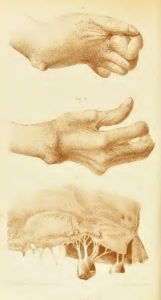
Figure 8. From Charcot’s 1868 Leçons sur les Maladies des Vieillards et les Maladies chroniques depicting articular rheumatism and cardiac valvular disease.
Rejuvenation in the 19th and 20th Century
One of Charcot’s contemporary colleagues in Paris tried to find a solution to disorders of old age. Better known by his experiments on spinal cord hemisections and the eponymous syndrome associated with the resulting signs, Charles-Edouard Brown-Séquard (1817-1894), during the last period of his career, investigated the effects of subcutaneous injections of liquid obtained from the testicles of animals. (See for instance Lancet 1889, July 20, p.105).
As happened so often in those days (self-experimentation), he administered the injections also to himself and believed to measure increased muscle strength among other effects. Although he tried to keep a strict scientific attitude, the popularity of the experiments finally harmed his reputation. Nevertheless, he was considered one of the pioneers of endocrinology.
The scientific reports were picked up by non-medical persons and used in novels, for instance by French writer Emile Zola (1840-1902), founder of the literary school of naturalism, who, in the last novel of his 20-volume Rougon-Macquart series, Le Docteur Pascal (1893), presents country physician Pascal Rougon, who made a genealogical tree of his own family with the purpose of studying heredity. He noted all kinds of interesting details about his family members, proving that degenerative taints are inherited (a popular subject in late 19th century medicine and society).
Zola staged Rougon not just as a physician, but also as a scientist. He extracted sheep brains and injected the extracts into patients. “Il croyait avoir découvert la panacée universelle, la liqueur de vie destinée à combattre la débilité humaine, seule cause réelle de tous les maux, une véritable et scientifique fontaine de Jouvence… ». [He believed to have discovered the universal panacea, the vital liquor destined to combat human debility, sole real cause of all ailments, a veritable and scientific fountain of youth… Zola, 1893, p.54]. Although considering himself to be successful at the beginning, Rougon finally turned to the injection of water, recognizing the placebo effect. One day, experimenting with organ extracts, he is criticized by his family members: “. . . il est encore a` sa cuisine du diable!” [. . . he is still in his devilish kitchen . . .], referring to his home laboratory.
Additional Reading
Koehler PJ. Charcot, la Salpêtrière, and hysteria as represented in European literature. Prog Brain Res. 2013;206:93-122.
Thane P. Geriatrics. In: Bynum WF, Porter R. Companion Encyclopedia of the History of Medicine. London, Routledge, 1997, pp. 1092-1115.
Zola E. Le Docteur Pascal (1984 edition by Livre de poche, first published in 1893). Paris: Fasquelle; 1893.
Around that time, Louis-Henry Goizet published his book La Vie Prolongée au Moyen de la Méthode Brown-Séquard [Life extended by the Brown-Séquard method;1891]. One of the chapters has the title, “Sénilité simple. Des effets du suc testiculaire employé dès les premières manifestations de la sénilité. – Retour rapide à l’âge virile. – Observations personelles de l’auteur » [Simple senility. Effects of testicular fluid applied from the first manifestations of senility. – Rapid return to the virile age. – Personal observations of the author]. The ideas were well carried into the 20th century.
French surgeon Serge Voronoff (1866-1951) applied testicular (and thyroid gland) tissue transplantations since about 1920 and published his Étude sur la Vieillesse et le Rajeunissement par la Greffe [Study of Old Age and Rejuvenation by Grafting, 1925]. While popular in the 1920s, he fell out of favor later after criticism from the scientific community and change of public opinion.
Old age and its problems have always led to resignation, preventive measures against associated disease, and even questionable interventions. •
